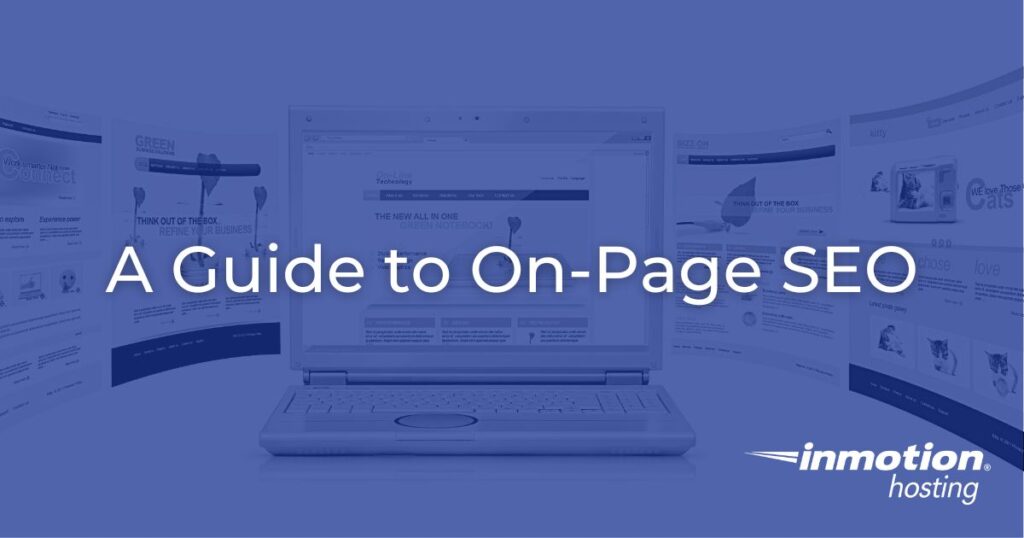
On-page SEO is one of the main components of SEO and can benefit your site in several ways.
In this article, we will introduce you to on-page SEO, tell you why it is essential, and teach you how to optimize your content for on-page SEO.
What Is On-Page SEO?
On-page SEO is the process of optimizing the pages on your website for search engines and visitors in order to boost your rankings in search results and improve your user experience.
Also sometimes referred to as on-site SEO, it is the opposite of off-page SEO and is considered one of the four main pillars of SEO.
Aspects of on-page SEO include:
- Meta descriptions
- Title tags
- Headings and subheadings
- HTML code
- Internal links
- On-page content
- URL optimization
- Images and virtual assets
- User experience
- Site speed
Why Is On-Page SEO Important?
As one of the four key aspects of SEO, on-page SEO offers a plethora of benefits for your site.
That is because many of the essential signals Google uses to determine a page’s rank come from the different elements of on-page SEO.
When done correctly, on-page SEO can help search engines better understand your site, which can improve your website’s search visibility and increase its traffic.
On top of that, high-ranking sites often have better click-through rates (CTR), which can lead to an increase in sales and conversions.
For these reasons, on-page SEO should be a vital part of your SEO strategy.
How to Optimize Your Content for On-Page SEO
That you know what on-page SEO is and understand its significance, we will share some tips for how to optimize your content for on-page SEO.
For best results, these tips should be combined to get the most out of your on-page SEO.
Use Keywords Early
Using valuable keywords in your content is an absolute must for SEO in general, but for on-page SEO, it’s also important that you use those same keywords early on in your content, preferably in the first paragraph.
Keywords give search engines a good idea of what your content is about, and when you use your target keywords in the first paragraph you make it clear to search engines and readers what the topic and purpose of the article are.
When you optimize your content for on-page SEO, choose valuable keywords and try to use them in one of your first few sentences.
Apply H1 and H2 Tags to Headings and Subheadings
Headings and subheadings are used to organize your content and make it clear to search engines that your content has a hierarchy.
When you use H1 and H2 tags for your heading and subheadings, you give Google valuable insight into what the paragraphs following those headings and subheadings are about.
They serve as “titles” to inform readers and search engines about the sections of your content (for easy scanning), as well as how your content is structured within a page.
Google pays a lot of attention to the user experience of a page, so the better job you do of using headers to make your content easy to read and understand for your readers, the higher Google will rank your page.
Optimize Title Tags and Meta Descriptions
Google considers title tags valuable search engine ranking factors, so like your content, you want to optimize them using the same keywords as your content.
And while meta descriptions might not count as a ranking factor, they can have an impact on your user experience which is good for SEO.
That is why it’s important to optimize both your title tags and meta descriptions for SEO by using the same keywords you used for your pages’ content.
Use a Good URL Structure
Like your title tags and meta descriptions, your URL structure should tell visitors and search engines what your page is pertaining to.
Try to keep your URLs short and to the point, and be sure to use your keywords so it is easy to tell what that page’s content will cover.
Create Unique and Valuable Content
Another key component of on-page SEO is the value of a page’s content. The better you can satisfy searchers’ needs, the higher your page will rank.
That means if you want your page to rank well, it should bring something unique or valuable to the table.
If your page can answer searchers’ unanswered questions, or do a better job of answering them than other existing pages, it can provide a major boost to that page’s SEO.
It’s important that you also try to avoid publishing duplicate content as it can lead to keyword cannibalization which can steal value from other pages.
Pay Attention to Image SEO
Most of the on-page SEO factors we have covered have focused on written content, but it’s important not to forget about your images as well.
If possible, your content should have photos and those photos should be optimized for search engines as well. Not only are visitors much more likely to engage with a page with pictures over a page that is just a block of text, but well-optimized images can also serve as a positive ranking factor for search engines.
The goal should be to use images or graphics that add depth to your content and make it easier for readers and search engines to understand what your page is about.
If you want to make your images stand out, check out these 11 Tips to Optimize Images for Search Engines.
On-page SEO is one of the most important components of SEO and it can have a big effect on your rankings, traffic, and user experience.
In fact, by not paying attention to your on-page SEO, you are missing out on a massive opportunity to make your content more appealing to your readers as well as search engines.
Want to stay away from other costly SEO blunders? Check out 8 Common SEO Mistakes to Avoid.
